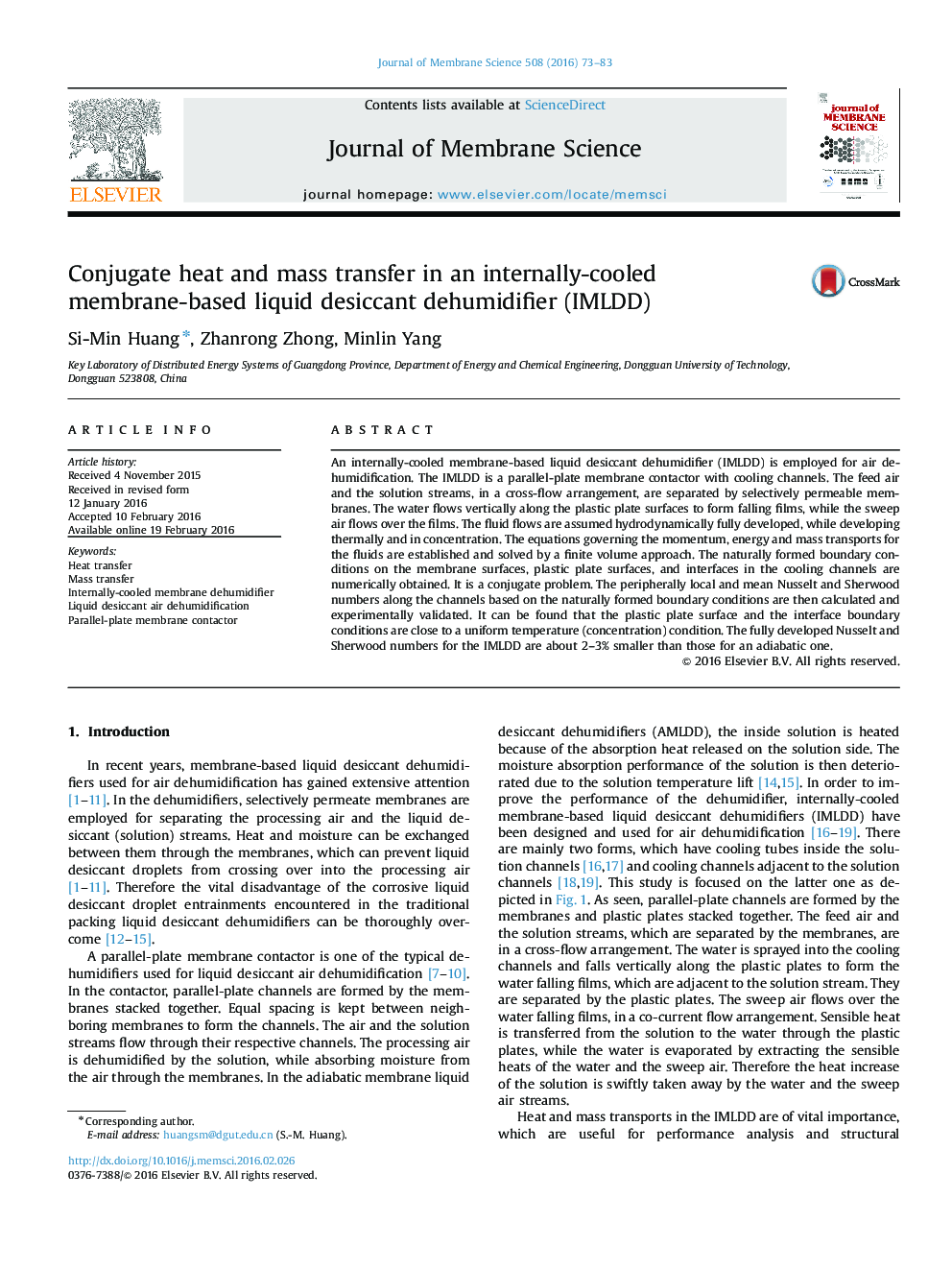| Article ID | Journal | Published Year | Pages | File Type |
|---|---|---|---|---|
| 632499 | Journal of Membrane Science | 2016 | 11 Pages |
•An internally-cooled membrane liquid desiccant dehumidifier (IMLDD) is used for air dehumidification.•Conjugate heat and mass transports in the IMLDD are studied.•Plastic plate surface and interface are close to a uniform value condition.•Nusselt and Sherwood numbers are somewhat smaller than those for an adiabatic one.
An internally-cooled membrane-based liquid desiccant dehumidifier (IMLDD) is employed for air dehumidification. The IMLDD is a parallel-plate membrane contactor with cooling channels. The feed air and the solution streams, in a cross-flow arrangement, are separated by selectively permeable membranes. The water flows vertically along the plastic plate surfaces to form falling films, while the sweep air flows over the films. The fluid flows are assumed hydrodynamically fully developed, while developing thermally and in concentration. The equations governing the momentum, energy and mass transports for the fluids are established and solved by a finite volume approach. The naturally formed boundary conditions on the membrane surfaces, plastic plate surfaces, and interfaces in the cooling channels are numerically obtained. It is a conjugate problem. The peripherally local and mean Nusselt and Sherwood numbers along the channels based on the naturally formed boundary conditions are then calculated and experimentally validated. It can be found that the plastic plate surface and the interface boundary conditions are close to a uniform temperature (concentration) condition. The fully developed Nusselt and Sherwood numbers for the IMLDD are about 2–3% smaller than those for an adiabatic one.
